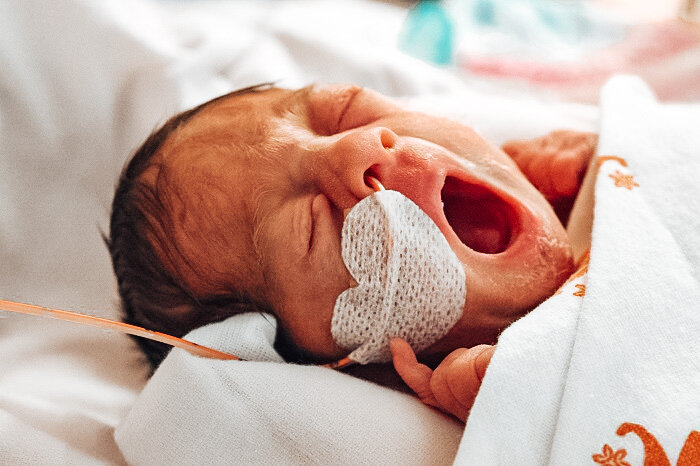Neonatal Abstinence Syndrome (NAS) is a disorder with abnormal symptoms of the central nervous, gastrointestinal, autonomic nervous, and respiratory systems presenting in the infant when transfer of harmful substances from the mother to the fetus abruptly stops at the time of delivery. Although some toxic substances used by the mother are not illegal, many are. Refer to my next post on intrauterine drug exposure (IUDE) to learn more about these harmful substances!
Symptoms of withdrawal may take 24-96 hours to appear after initial discontinuation of the drug. Clinical presentation varies and can include any of the following:
Jitteriness
Tremors
Hyperactive reflexes
Increased muscle tone
Sweating/diaphoresis
Fever
Mottling
Irritability
Decreased sleep
High-pitched and/or excessive crying
Frantic nonproductive suckling on the pacifier
Poor feeding
Vomiting
Diarrhea
Tachypnea
Sneezing
Nasal stuffiness/congestion
Early diagnosis of drug exposure is KEY! Your care team will:
Monitor for signs and symptoms as previously described
Evaluate urine and meconium toxicology screens
Use the Finnegan Scoring Tool/Algorithm for treatment and weaning
Depending on the severity and longevity of the substance abuse, some infants may require a longer or shorter course of treatment. Non-pharmacological treatment interventions will be started immediately and can include:
The Finnegan Neonatal Abstinence Scoring System. This is the most commonly used scoring tool. Scoring is dynamic and should reflect the infant’s behavior from the time of the last score to the next. If the baby is feeding every 3 hours, this will encompass approximately 3 hours of time. If the infant receives a score >8, notify the provider immediately so that he/she can initiate pharmacological treatment. If the baby is already receiving medications, an increased dose or additional dose may be warranted.
Breast milk will be evaluated on a case by case basis. If the quality of the breast milk is compromised, questionable and/or deemed inappropriate for use, the infant should be fed lactose free formula to help decrease gastric distress from withdrawal symptoms.
Consider increasing caloric density formula; infants with NAS have higher caloric needs due to increased metabolism of withdrawal.
It is important to maintain the infant in an open crib, unless contraindicated, to prevent artificially increasing the infant’s temperature and/or sweating.
If the NAS baby is having frequent, loose stools, prevent excoriation on the bum by applying skin barrier/diaper cream.
Cluster your care and minimize handling.
Swaddle the infant and hold the infant firmly and close to the body when appropriate. Perform skin-to-skin in adherence to hospital policy.
Withdrawing infants may be gently rocked by the nurse, legal guardian, or a trained volunteer. This helps the infant to sleep in between feeds in order to conserve energy.
Reduce environmental stimuli, keeping light and noise to a minimum. It may be best to keep your NAS baby in a private room away from the other infants on the unit. Excessive crying may be bothersome and disturbing to the other babies trying to sleep.
Provide a pacifier for comfort. It is acceptable to apply sucrose to the pacifier in order to help soothe the baby during his withdrawal.
In conjunction with the above comfort measures, pharmacologic therapy is indicated for infants who have greater severity of symptoms. Approximately 50%–80% of infants exposed to drugs in utero will require pharmacologic treatment. Short-acting opioids (e.g., morphine sulfate) and long-acting opioids (e.g., methadone) are the first-line agents and the mainstay of treatment for NAS. Dosing is based on the weight of the infant and the severity of the symptoms. Typically, a starting dose is given and increased until symptoms are controlled and then slowly tapered. An infant must be fully weaned off the medication with NAS scores of 0 consecutively before he can be discharged home.

